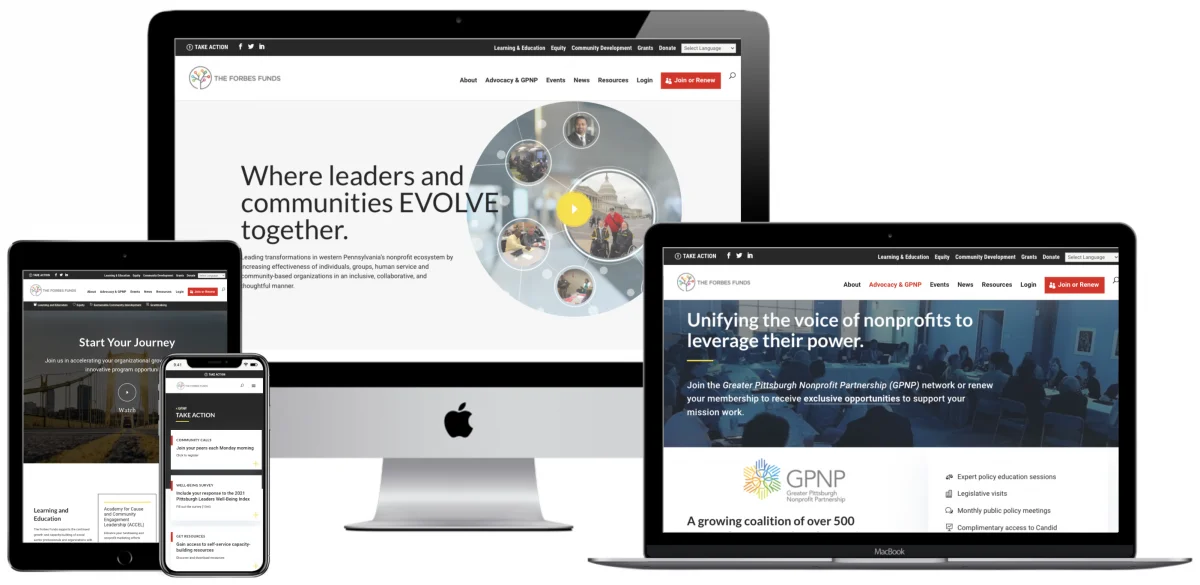When businesses search on Google for terms such as ‘SEO’ or ‘web development,’ they often do so for improvement, efficiency, or doing something better than before. Digital innovations happen because people want to find ways to do things better. One way companies ‘do things better’ is by implementing design systems.
To create efficient and innovative product development every time, designers and CEOs need a design system. Design systems can increase the speed of the design and development process, ensuring that products are designed logically and coherently every time (because there’s a set process in place, like a blueprint from which to begin).
Zoom in on your design process; if you care about user experience, you must implement a design system. In web design, ‘frills’ for the sake of it are useless. Design for the web has to look fantastic but also be functional and meet your end user’s needs. The design also needs to be impactful and generate the results you hoped. But how do you continue to design in a way that continually generates impact? Again, that’s where design systems come in.
Let’s look at what a design system is and the digital design system best practices.
What is a design system?
A design system is a product where everything works together to achieve a cohesive look and feel with lego-block-like components that build upon one another.
Design is a term that most people are familiar with. It’s art. It’s visual. It’s the imagery, the look, feel, shape, color, something appealing and functional. The art of architecture with the technical specification needed to back it up.
A system is a series of parts that work together. In the human body, we refer to the ‘digestive system,’ the ‘skeletal system,’ the ‘circulatory system,’ the ‘nervous system,’ the ‘respiratory system’–I could go on–but you get the picture. Systems create a ‘whole’ out of complex parts. The system works in harmony with the other parts.
So, putting these two terms together, it’s a harmonious set of design principles that work together from the ground up. Just like in the human body, you can zoom in further to the individual parts, or you can zoom out and see the whole, but there’s an explanation for each part. But it also works together by design, by purposefully designing those parts to work together in unison.

Many digital brands like Airbnb, Atlassian, Nokia, and Shopify leverage their design systems to build and disseminate brand awareness. Design systems are an investment for businesses, and sometimes companies make that investment only when the inefficiencies of not having a design system in place become almost disastrously apparent.
Take a gander at this future-proof design system from Nokia released in 2023. Pure introduces itself elegantly yet simply, starting with a brief value proposition at the top and a video explainer. As you go down, it describes in more detail — with examples depicted.

If you want a well-crafted user experience, an easy-to-use system for your designers, and robust problem-solving, a design system may be for you!
The terms associated with design systems: pattern libraries, style guides, and code snippets
The terms design system, pattern libraries, and style guides are often used reciprocally and interchangeably, but they have fundamental differences.
Design system: we have already defined the term design system, but it’s the complete set of design standards, including documentation, design principles, and the toolkit to implement the design (user interface patterns and code) to achieve the standards.
Pattern library: if the design system is the big umbrella, a pattern library fits underneath it and is a set of design patterns a company uses. Think of it like a ‘normal’ book library. If you visit the shelves, you can find the books you want. Pattern libraries contain components of design that you can use again and again. It’s like a storage bin for company-branded buttons, images, hero elements, sliders, galleries, navigation, articles, modals, page layouts, and other reusable components. The pattern library is your component with your consistent form and look, and it’s strongly connected to the last part, the style guide.
Style guide: you may have used a ‘style guide’ in your high school (and college) English class to define language usage so the concept won’t be unfamiliar. Like a pattern library, the style guide is under the big umbrella of a design system. The technical documentation describes the design system: what should the products look and feel like? What are the use cases for UI patterns (i.e., how do people use your website to complete a task)? What are the typographic scales (i.e., which font sizes work harmoniously on your website)? And so on.
The style guide contains your repository of branded colors, the fonts you use, any logos you want, and other brand attributes you use in your product design. Style guides and pattern libraries are a must for designers and marketing specialists.
Both style guides and pattern libraries may contain code snippets representing those styles, patterns, buttons, user interface elements, page layouts, etc.
So, what do I do with this information?
A design system ensures that your user experience is at the forefront. Whether you’re designing an app, a mobile-friendly site, or something else, the experience for your user should be seamless, and they shouldn’t need a manual to learn how to use your design.
Good user experience is all about good design. And putting a design system in place is the new best practice for ensuring that good design and user experience are at the forefront.
Why do I need a design system?
Again, a design system is in place, and you’ll ensure you have the best user experience possible. In a nutshell, a design system allows your designers, developers, product managers, and everyone in your company to have a single source of your design principles and what you want for your branding. Design systems can solve common problems and ensure that the design of all your products is consistent. It allows your designers to move from project to project more quickly and have an easy starting point, which creates more efficiency.
What are the design system best practices?
Generate consistency for all products
Everything in your branding should be consistent, from your company’s default avatars to your homepage colors to your social media buttons. With a design system, your designers will know exactly which parameters they should meet.
Express clear guidelines
This is where your style guide comes in handy. But you must ensure that everyone from the most technical to the least technical can understand your guidelines. The documentation should be comprehensible, clear, and easily accessible. Your product managers, designers, engineers, CEO, and everyone should be able to access and understand this document to ensure consistency and clarity of the vision.
Create efficiency
Putting a design system in place creates efficiency because your designers will not have to redesign logos, images, and dig out the color scheme every time. If they forget your font color, size, and spacing, they’ll have a guide that lets them know what to do. If they need some social media icons, they’ll have a library to visit.
Plus, design systems allow your company to be scalable. Whether you have a team of five or one hundred and five, the process will be smoother if you have a design system in place. It will help prevent errors or show what to do in case of an error. Everyone can also be on the same page.
How do I create a design system?
- Do an audit of your current designs and extract any elements that repeat.
- Any repeating elements can become the basis of your UI inventory. List and describe all of your design patterns used in your interface, taking notes of any inconsistencies.
- Organize your UI inventory into categories and subcategories so that everything in your inventory is easy to find and searchable by your designers, product managers, and anyone else involved.
- Put these elements in one place so everyone can access the resources.
- Get everyone on board. Communicate with your team about what you’re doing and the importance of a design system. Everyone needs to know what is happening and what’s involved in buy-in. Estimate how many design hours are wasted on redundant work and explain how your design system will create a more efficient team.
- Work with your team to establish what design principles you want. Work on your style guide once you’ve decided. You’ll want to think of the design principles such as adding consistent branding throughout the site, using white space, reducing the number of choices on each page, applying the rule of thirds, compressing images, adding breadcrumb trails, using color contrast, animating bars, and popups, grouping similar elements, adding human faces, creating distinctive ads, landings pages, and other elements on your site and more. You can conduct UI testing to understand what your audience wants for your website and how easy it is to recognize and navigate your brand.
- Establish your color palette. When developing their design system, one company found over 85 shades of grey used on their website, which all needed consistency. Create a palette and establish a naming convention for it.
- Develop your typographic scale. Your scale should establish your font size for normal text, headings, main titles, weight, line height, spacing, etc. Ensure your team knows about the fonts you use and the design principles involved in them.
- Determine your icons and store them in your pattern library. In your inventory, you may have used different icons on your website and then different ones on social. Decide which icons you want to use from your UI inventory and put those into your design system.
- Update, update, update! Any time you change your design system, update your pattern library and documentation (style guide). Check your design library for consistency occasionally to ensure it’s current and up-to-date as your business evolves.
Design system top tips
Companies with growing pains with implementing design systems note that it’s essential to fund your design system adequately. Design systems allow your business to scale and grow, so you must have the right people in place to make it a success. Hire the right people to do the job, and work on creating your design system from the ground up. You’ll want to get your whole team on board with the idea, especially those who will implement it. You want to agree on every system element so that everyone is on board and will use the design system to their advantage.
You can start small at first and build up a more extensive repository of your components. Don’t feel like there’s a wrong time to start or that the task is too intimidating.
Even if you’re a small company, you can benefit from a design system, especially if you plan to grow and scale. When your company is small but growing is precisely the time to start building and implementing your design system because you’ll have something to grow later on. The task will seem smaller and more manageable since your offerings may be less complex.
If you’re a massive company with many different elements, don’t worry! The task may seem overwhelming, but larger companies often have more resources to tackle larger projects. If you allocate the correct funding to get started now, you’ll be well on your way.
Where do I start?
Get in touch if you want to overhaul your website, from a complete redesign to technical tweaks. We can help you start your digital design system using the best practices. We will help you create consistency across your branding and generate the best user experience.
Contact Key Medium if you have questions about design systems, SEO, branding, web design, web development, and digital strategy. We create stunning websites ready for the future with considerations for mobile-first, AI-first, voice search, Google’s updates like search journeys, and schema markup.

Elaine Frieman holds a Master’s Degree and is a UK-based professional editor, educational writer, and former marketing agency content writer where she wrote articles for disparate clients using SEO best practice. She enjoys reading, writing, walking in the countryside, traveling, spending time with other people’s cats, and going for afternoon tea.

Ali Jaffar has been building dazzling websites and creating amazing online experiences for over a decade. His mastery of the latest innovations in web development results in world-class website experiences set apart by show-stopping style and seamless functionality. A sought-after consultant and 50-time award-winning storyteller, UX expert, and web developer — Ali lends his talents to build and bolster digital experiences for a wide array of clients — with a keen focus on web design for nonprofit organizations, B2B, and government agencies. When Ali’s not helping his clients grow, you can find him cooking, exploring new places with his dog, or experimenting with AI & new gadgets.
Connect with Ali on LinkedIn to continue the conversation.

